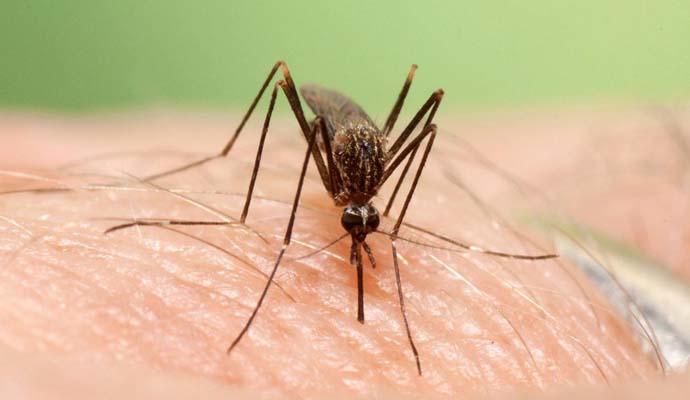attractant for mosquitoes NONANAL
Scientists at the University of California have finally managed to isolate the dominant odor that is produced by humans and birds and attracts blood-feeding mosquitoes from the Culicidae family that carry West Nile fever virus and other life-threatening illnesses. Recently, the results of a study were published, which explained why mosquitoes drinking the blood of birds, reoriented to people.
Entomology professor Walter Liel and researcher Zayn Siid found that nonanal is a powerful seven-chemical substance that attracts the smell of mosquitoes, directing them to food – blood. A seven-chemical substance is a substance or mixture that carries a specific message. Mosquitoes are able to detect odors due to olfactory receptor neurons on their antennae.
So, birds, the main food item for mosquitoes, serve as a repository for West Nile fever virus, says Liel. When infected mosquitoes drink blood, they transmit the virus to birds, people, horses, dogs, cats, bats, chipmunks, skunks, squirrels, and domestic rabbits. Since 1999, the US Centers for Disease Control and Prevention have recorded 29.397 human cases and 1.147 fatal cases in the United States alone.
Researchers at the University of California have tested hundreds of naturally occurring mixtures produced by humans and birds. Scientists have collected chemical odors from 16 adults. The group of volunteers included people of different races and ethnic groups. Then, the specificity and susceptibility of olfactory receptor neurons with respect to isolated mixtures on antennae of mosquitoes were determined.
Thus, the nonanal acts mutually reinforcing with carbon dioxide, which, as you know, attracts mosquitoes. Nonanal, along with carbon dioxide, increased the attractiveness of traps by 50 percent compared to traps in which only carbon dioxide served as bait.
OCTENOL (1-octen-3-ol)
Scientists: mosquitoes find a victim by a loop of carbon dioxide and other substances released by breathing. In particular, OCTENOL. (1-octen-3-ol)
The smell coming from the body may be the reason that some people are more attracted to mosquitoes than others.
American scientists have found that mosquitoes track down their prey, given three factors: smell, visual image, and temperature. Biologists recorded the movement of hungry mosquitoes in a wind tunnel.
Insects were constantly attracted by a train of carbon dioxide, reminiscent of the air that a person exhales. “Sniffing” carbon dioxide, mosquitoes try to sit on a dark spot.
At short distances, insects can feel heat and rush to its source. Research published in Current Biology is based on earlier research that odor is a critical factor for mosquitoes in determining their next prey.
The smell emanating from the body can cause some people to be more attracted to mosquitoes than others.
But the main thing that mosquitoes are guided by is carbon dioxide, which is exhaled by animals, whose blood and mosquitoes feed on, in particular, humans. Mosquitoes can catch a source of carbon dioxide at a distance of up to 50 meters. The content of octenol in the air also significantly increases the attractiveness for mosquitoes, since octenol is released during breathing.
Earlier work suggested that bloodsucking attracted heat and being in sight. However, the new study is the first to examine in detail the influence of all three factors.
“We were able to build a working theory about how all the sensory organs of a mosquito interact to find a person,” says Floris van Bregel, the author of a study at the California Institute of Technology.
Interaction of factors
Scientists have tried to replicate a mosquito behavior strategy when searching for a victim
The most important was to separate the visual, temperature and olfactory pathogens during the experiment. For this, a carbon dioxide jet, a dark spot on the wall of the wind tunnel and a heated glass tile, which was almost invisible to mosquitoes, were used.
“We could see how mosquitoes reacted to each of these pathogens and their interactions,” BBC Van Bregel explained.
For example, if insects were launched into a pipe where there was a dark spot on one of the walls, but there was nothing else, mosquitoes flew by. But if there was a trail of carbon dioxide near the spot, the insects “smell” this gas and then go towards the visual pathogen.
“Mosquitoes pay attention to visual stimuli only after they” hear “a smell that indicates that the object is somewhere nearby,” says scientist Michael Dickinson.
“This helps mosquitoes not waste energy on false targets such as stones or plants,” he continues.
As a result, scientists described a three-stage strategy for mosquitoes to search for victims.
Mosquitoes try to smell – especially a carbon dioxide plume – within a radius of 10-50 meters. Then they approach the source of the smell and try to see the object from a distance of five to fifteen meters. When mosquitoes find themselves at a distance of a meter from a potential victim, they begin to focus on heat.
“The larger the person, the more they emit carbon dioxide,” says Dr. Joe Conlon of the American Mosquito Control Association. That is why, for example, mosquitoes are more attracted to pregnant women who breathe with the fetus.
“Scientists say that the more you” knock “mosquitoes out of the way, masking your smell and your presence, the more likely they will bite someone else and not you. The sad conclusion of this study is that it’s very difficult to hide from mosquitoes.” “says van Bregel.
“As an option, you can take a friend with you and ask him to wear a bright T-shirt,” the researcher jokes.

